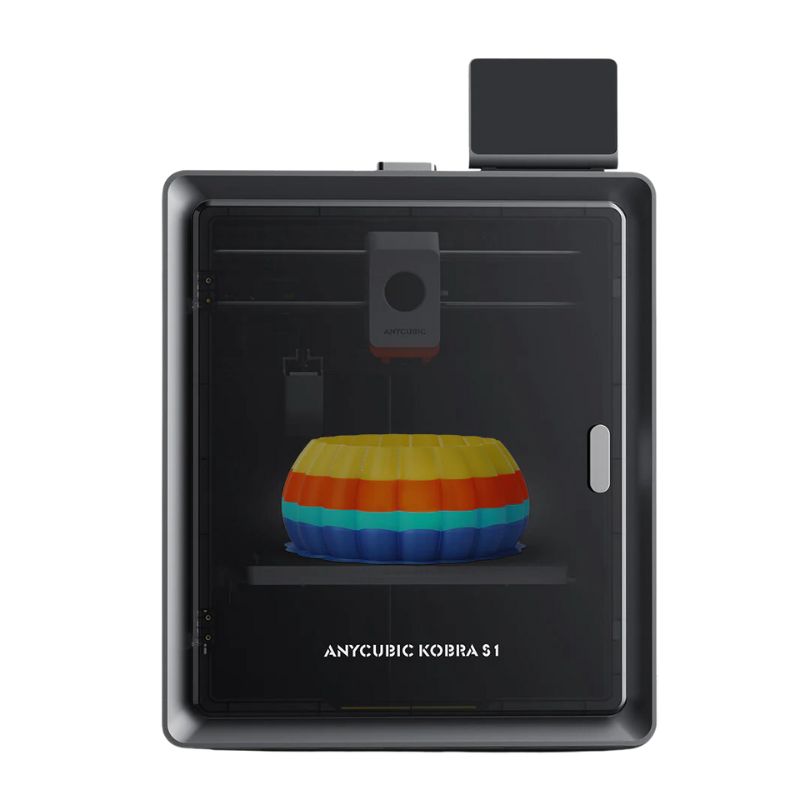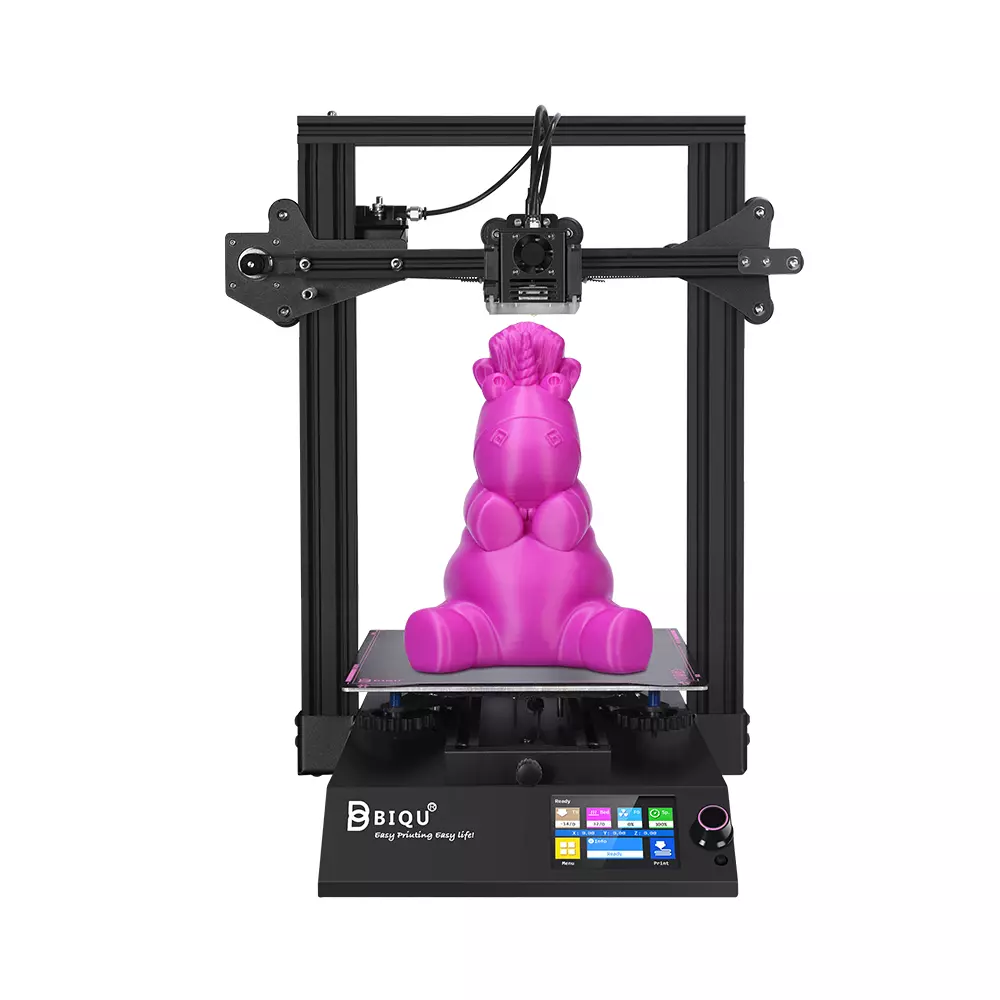Compare Kobra S1 Combo vs BIQU B1
Comparison between the best 3D printers
Choose the best 3D printer at the best price. The cheapest 3D printers are here.
Buy a 3D printer here with 3D Fila.
 |
 |
|
| Model | Kobra S1 Combo[BUY Kobra S1 Combo] |
BIQU B1 |
| Printing Material | Filament | Filament |
| Buy Filament for Anycubic Kobra S1 Combo | Buy Filament forBigTreeTech BIQU B1 | |
| Estimated price | $599,00 | $269,00 |
| Manufacturer | Anycubic | BigTreeTech |
| Release Year | 2025 | 2020 |
| Print Volume [mm] | 250x250x250 | 235x235x270 |
| Printer Size [mm] | 400x410x490 | 412x402x492 |
| Weight [kg] | 18 | 8,00 |
| Power Loss Recovery | YES | YES |
| Enclosed printer | YES | NO |
| Bed Leveling | Automatic | Manual |
| Filament End Sensor | YES | YES |
| Bed type | Heated | Heated |
| Power supply system | Direct Drive | Bowden |
| Standard nozzle | 0,4 | 0,4 |
| Maximum Nozzle Temperature [°C] | 320 | 250 |
| Maximum Bed Temperature [°C] | 120 | 100 |
| Maximum printing speed [mm/s] | 600 | 100 |
| Filament holder | YES | YES |
| Camera for supervision | YES | YES |
| Recommended filaments | PLA, PETG, TPU[1], ABS, ASA | PLA, TPU, ABS, PETG |
| Recommended slicers | Anycubic Slicer Next, Orca Slicer | Cura, Simplify, Slic3r |
| Maximum Resolution [mm] | 0,01 | 0,1 |
| Processor | 32 Bits BTT SKR V 1.4 | |
| Display | Touchscreen 4,3'' | Touchscreen TFT 3,5'' |
| Power Supply | 24V / 360W | |
| Connectivity | USB, Wifi | SD / USB |
| Operating systems | Windows, Linux e Macbook | Windows, Mac, Linux |
| Date of registration in the system | 2025-02-25 | 2021-04-14 |
| Release date | 2025 | 2020 |
| Extra features | The Anycubic Kobra S1 Combo is a fully enclosed CoreXY 3D printer with speeds up to 600mm/s and 20,000mm/s² acceleration. It features a 320°C hotend, native multicolor printing (4 to 8 colors with ACE Pro), and active filament drying. Equipped with LeviQ 3.0 auto-leveling, camera monitoring, AI failure detection, carbon filtration, and a 4.3 touchscreen, it ensures high-quality, efficient, and reliable 3D printing. | The BIQU B1 is an advanced 3D printer with a silent 32-bit BTT SKR V1.4 motherboard and ARM Cortex-M3 CPU, offering DIY interfaces (I2C, SPI, WiFi) and dual Z-axis. Its dual BTT B1 TFT35 V3.0 operating system allows real-time monitoring and multiple printing modes, including G-code visualization effects. It stands out for its BIQU SSS (Super Spring Steel), ensuring easy model adhesion and simplified removal, with the possibility of using it on both sides. It includes a filament sensor, automatically pausing printing in case of filament breakage. The multicolored RGB lights integrated into the hotend allow you to view the printing status even at night. Additional notes include the need for a BIQU-specific Type-C cable and extra interfaces for smart filament sensor and BL Touch. |
| Support for multiple colors and materials (AMS and CFS) | YES | NO |
Notes * |
||
| Cost-benefit | 7 / 10 | 7 / 10 |
| Hardware | 8 / 10 | 2 / 10 |
| Tela | . | . |
| Print volume | 3 / 10 | 3 / 10 |
| Performance | 5 / 10 | 1 / 10 |
| [BUY Kobra S1 Combo] |
Conclusion |
| In comparing the Anycubic Kobra S1 Combo and the BIQU B1, several key factors emerge that highlight the strengths and weaknesses of each 3D printer. The Kobra S1 Combo, with its higher price point, offers advanced features and capabilities that justify the investment for serious users. It boasts a larger print volume, automatic bed leveling, higher maximum nozzle and bed temperatures, and impressive printing speeds. Its enclosed design is advantageous for stability and quality, especially when working with a variety of filament types. Additional features like camera monitoring, AI failure detection, and a touchscreen interface further enhance its usability and reliability, making it suitable for both personal and professional applications. On the other hand, the BIQU B1 provides a more budget-friendly option without compromising too much on essential functionalities. While it lacks the enclosed design, its manual bed leveling requires more user involvement. It still delivers commendable performance for many common materials and includes features like a silent motherboard and dual Z-axis for enhanced stability. However, its lower maximum temperatures and slower print speeds may limit its effectiveness for more complex projects. Ultimately, the choice between these two models will depend on the user's specific needs and budget. The Kobra S1 Combo is ideal for those who prioritize speed, automation, and versatility in materials, while the BIQU B1 serves as a strong entry-level option for hobbyists looking for a functional printer without the premium price tag. The cost-benefit analysis indicates that while the Kobra S1 Combo offers better overall hardware and performance, the BIQU B1 may attract beginners or those on a tighter budget seeking reliable printing capabilities. |

